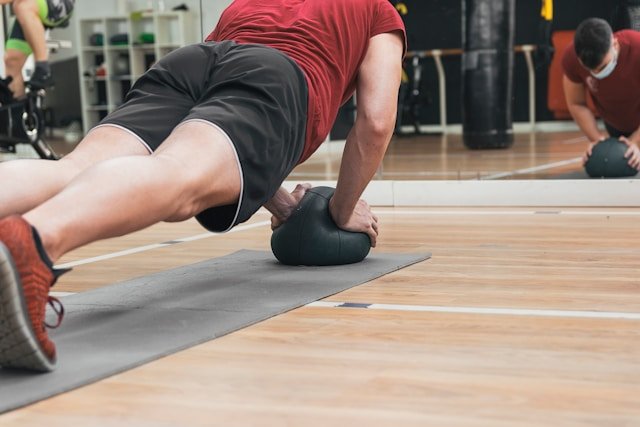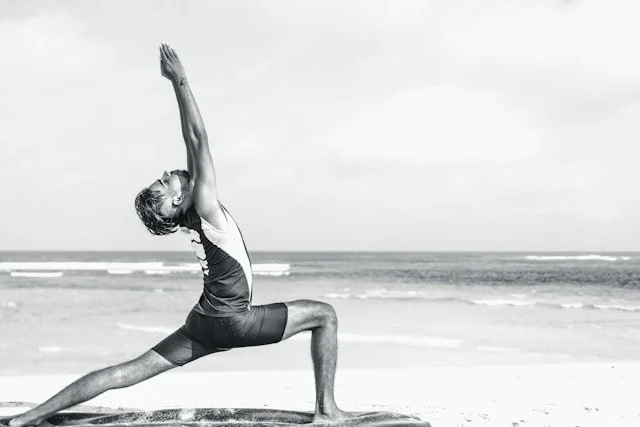Functional Physical Therapy exercises
Functional physical therapy exercises focus on improving real-life movements and daily activities by targeting specific muscle groups and movement patterns. Exercises that mimic activities like lifting, carrying, and reaching improve mobility, reduce pain, and improve quality of life.
How Functional Physical Therapy Exercises Work
The Balanced Body physical therapists evaluate a patient's current status. They look at the patient’s limitations and discuss goals. Then, the therapist creates an individualized treatment plan that includes progressive therapeutic and functional exercises and activities.
Functional physical therapy exercises are designed to mimic real-life movements and engage multiple muscle groups at once. They work holistically to improve how your body moves, feels, and performs in daily activities. Here's how they target strength, balance, mobility, muscular endurance, and stability:
Resistance exercises build strength
Exercises that Build Strength
Functional physical therapy exercises build strength by:
Targeting major muscle groups through compound movements (e.g., squats, lunges, step-ups).
Using resistance (bodyweight, bands, weights) to challenge muscles.
Activating stabilizers so that smaller, supportive muscles work alongside larger muscles.
An example of a functional PT exercise that builds strength is the simple step-up exercise. This movement strengthens quads, glutes, and hamstrings. These muscles climb stairs and get you up out of a chair.
Core exercises improve balance
Exercises that Improve Balance
Therapists use functional therapy exercises to improve balance by:
Challenging your proprioception (your natural sense of body position) using unstable surfaces or single-leg movements.
Engaging your core and lower body muscles to stabilize joints during motion.
Training the nervous system to respond more efficiently to changes in position or terrain.
For example, a single-leg Romanian deadlift improves ankle, knee, and hip coordination while boosting balance. This is important for safely reaching forward while standing such when loading or unloading the dishwasher or picking up a basket of laundry.
Lunges improve mobility
Exercises That Improve Mobility
Functional exercises enhance mobility by:
Promoting an active range of motion in joints through dynamic movement.
Lengthening and strengthening muscles at the same time, improving both flexibility and control.
Reducing stiffness and joint restrictions, especially when paired with mobility tools or stretches.
A therapist uses deep lunges with rotation to improve hip, spine, and shoulder mobility simultaneously. We often perform whole body twisting and reaching without thinking. Vacuuming, sweeping, or mopping require lunging forward and rotating the upper body repeatedly.
Functional Physical Therapy That Increases Muscular Endurance
Therapists help patients with exercises and movements that build endurance by:
Using moderate resistance and higher reps to keep muscles under tension longer.
Increasing aerobic capacity when done in circuits or continuous sequences.
Training muscles to resist fatigue, making daily tasks feel easier and less tiresome over time.
Repeated sit-to-stands or wall sits challenge endurance in legs and glutes. This builds functional lower-body endurance. For people that are aging or recovering from an injury, these exercises make it easier to stand up from a toilet, get out of a car, and getting up and down off the floor.
Squats are an awesome functional exercise to improve stability
Functional Exercises for Improved Stability
Therapists employ functional training to improve stability by:
Activating the core and stabilizing the muscles that keep your spine and joints secure.
Focusing on controlled movement, which helps prevent falls or injury.
Building resilience in connective tissue (like tendons and ligaments) through consistent loading.
Therapists at Balanced Body use a simple plank with shoulder taps to train for trunk stability while resisting rotation. This is important as many everyday tasks require one side of the body to be active while the other side is stable. Holding the counter while reaching into an overhead cabinet or carrying groceries or a child on one side are examples of this movement.
Functional Physical Therapy for Improved Quality of Life
Functional physical therapy isn’t just about training for isolated muscle gain. This type of physical therapy integrates improved movement patterns that help your body work as a whole. Whether you're recovering from injury, improving athletic performance, or just trying to move more confidently, functional physical therapy exercises build a stronger, more coordinated, and resilient body.
For functional physical therapy in Irvine, Newport Beach, Laguna Beach, Costa Mesa, and surrounding Orange County areas, call (949) 748-7806 and schedule a free consultation.




